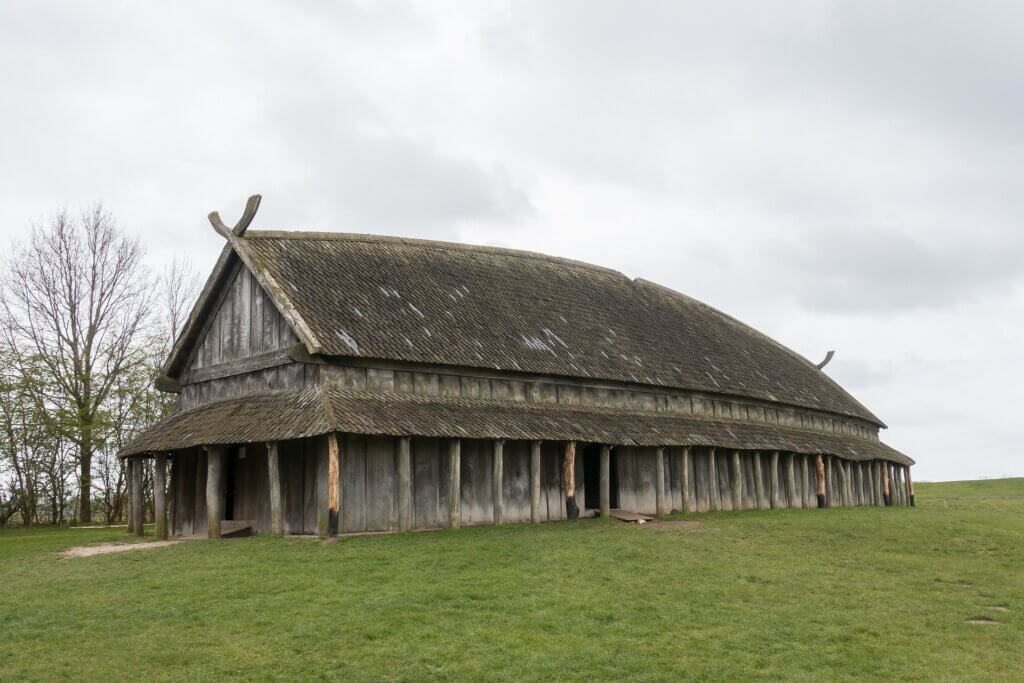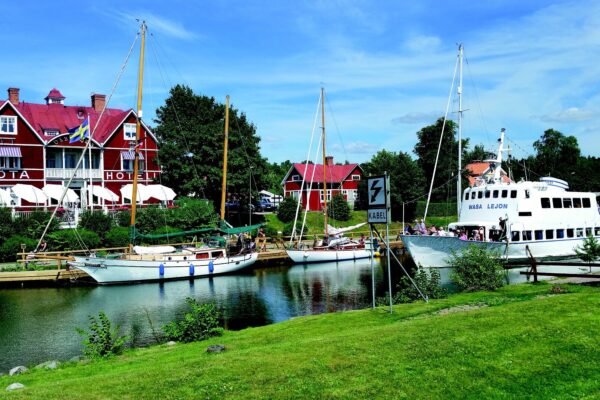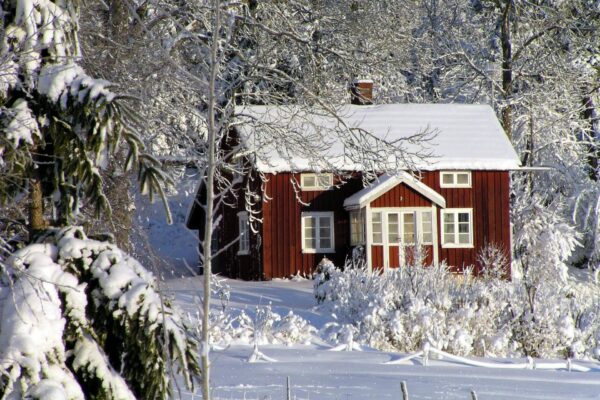Dense forests, numerous lakes and red houses – this is the Sweden we know from postcards. But in addition to idyllic nature, Sweden has a lot more to offer, above all relaxed cities, cosy coastal towns and interesting cultural attractions – museums, castles and historical archaeological sites are also plentiful in Sweden. Here you will find a selection of popular sights that you shouldn’t miss on your next holiday in Sweden!
Sights in Sweden: Stockholm
Sweden’s vibrant capital Stockholm is a popular destination for a short trip – whether for a long weekend, as a stopover on a longer trip to Sweden or between or over the holidays. The Scandinavian metropolis offers an unforgettable city break at any time of year, combining nature with history and culture, as well as relaxation and enjoyment.
Gamla Stan with Royal Palace & Parliament
Gamla Stan is undoubtedly one of the must-sees in the Swedish capital. In the centre of the medieval old town you will find the oldest square in the entire city, Stortorget, where colourful houses line up to form a postcard motif. The district with its colourful houses, cobblestones and narrow alleyways is perfect for strolling, shopping and drinking coffee.
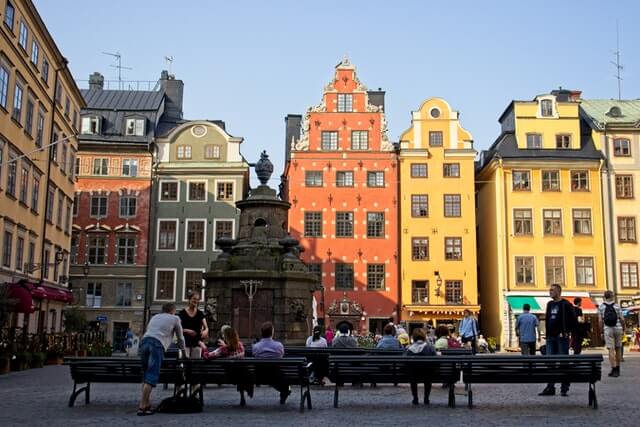
There are also two major sights in the Old Town: the Royal Palace and the Swedish Parliament. At Kungliga slottet you can not only watch the changing of the castle guard, but also visit the castle with its collection of jewellery and works of art.
Skansen
Skansen is an open-air museum on the island of Djurgården, known as a national park and museum island, which is best visited in summer and is also popular with children. The oldest open-air museum in the world was opened in 1891 and is a kind of Sweden in miniature – around 150 buildings from all over the country present the Nordic state in all its forms.
For example, you will find farms, a city neighbourhood and a church. Dressed-up showmen scurry around these buildings and offer activities and presentations – for example, there are various workshops and manufactories. There is also an animal park, which is home to around 300 animals that can also be found in Sweden’s wilderness.
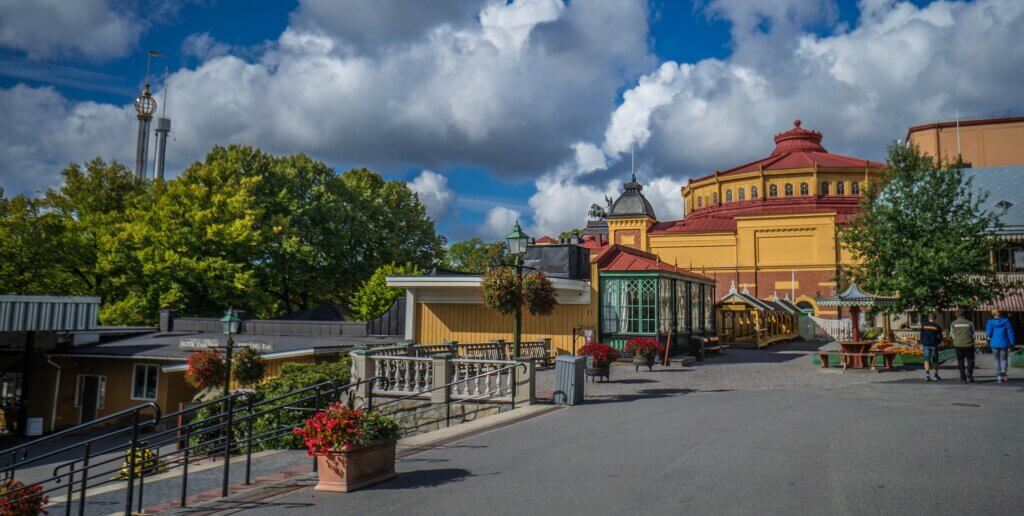
ABBA Museum
Another popular museum on the island of Djurgården is the ABBA Museum, which is not just for fans of Sweden’s most famous band. Here you can learn all about the ESC winners and be transported back to the 1970s. There are spatial reconstructions, but also original exhibits from the members’ possessions. The fan shop and ABBA karaoke are also popular.
City library
If you are a fan of books and literature, you should definitely pay a visit to the impressive Stockholm City Library. The building is considered an architectural masterpiece in the style of Swedish classicism and houses around 700,000 books. The round main room is particularly famous – full shelves line several floors up to the ceiling.
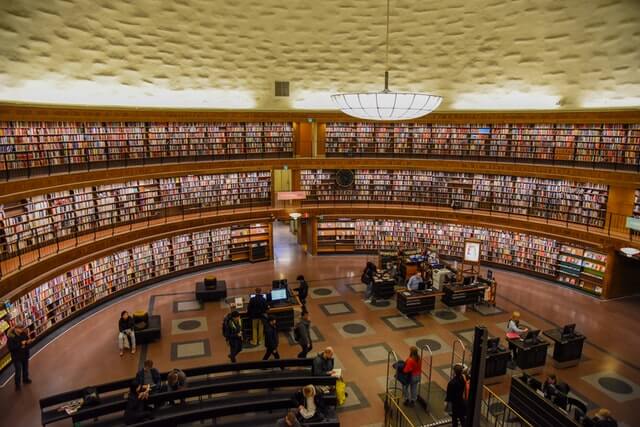
Gröna Lund
If you want to enjoy the summer weather in Stockholm, you should visit Gröna Lund. The oldest amusement park in the country – located directly on the water – has been around since 1883. Although it is comparatively small, it offers everything you could wish for: three freefall towers, seven modern roller coasters, various food options and numerous merry-go-rounds for the little ones.
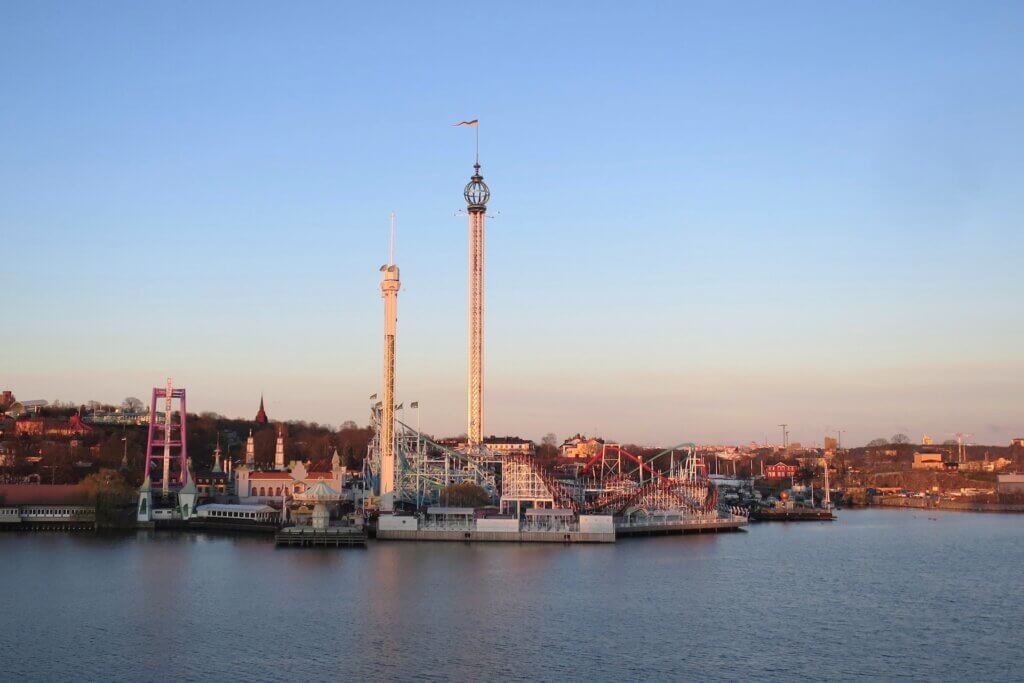
Sweden sights in nature
Sweden is known for its beautiful nature – whether by the water, in the mountains or in the forest; on a bike, in a canoe or on foot: there is plenty to discover and experience under the open sky in every region of Sweden.
Northern Lights in Sweden
In Sweden, the best place to see the Northern Lights is in the northernmost region of Swedish Lapland. A tip for travellers is the area around the town of Abisko with the national park of the same name. Here you will find the “Blue Hole of Abisko”: the sky appears like a hole here as it always remains cloud-free, regardless of the weather. Directly below is therefore the perfect spot to view the Northern Lights.
Other places in Sweden are Kiruna, the northernmost city in Sweden, and Luleå, which is also very far north at the mouth of the Gulf of Bothnia. In November, December and January, the likelihood of seeing the Northern Lights in Sweden is somewhat lower. It is therefore best to travel in the transitional phases of autumn and winter or winter and spring.
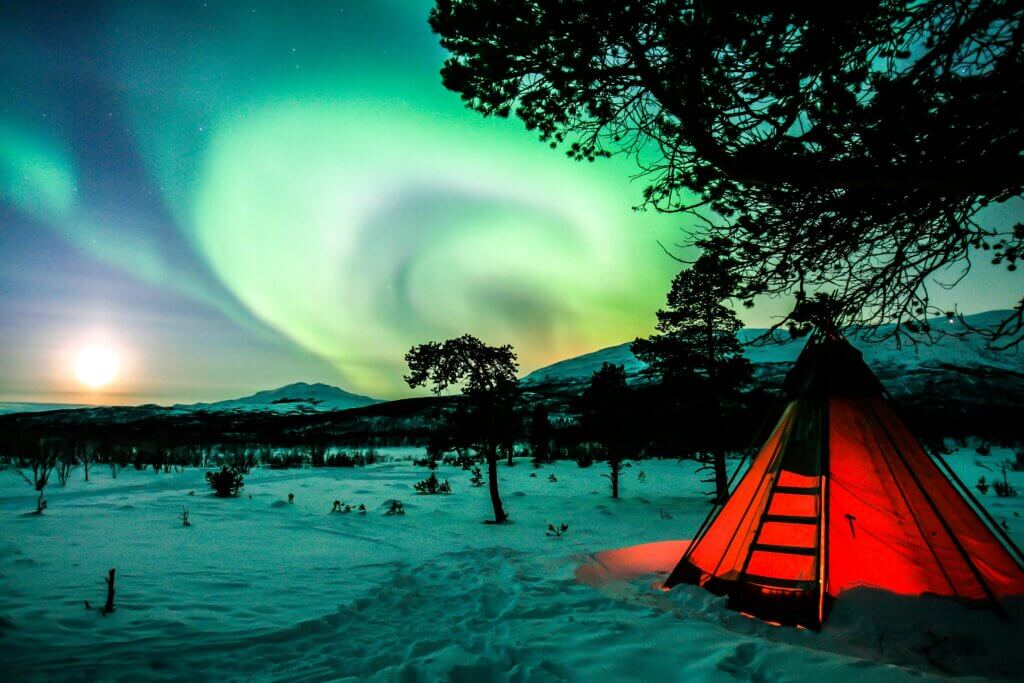
The great lakes: Vänern and Vättern
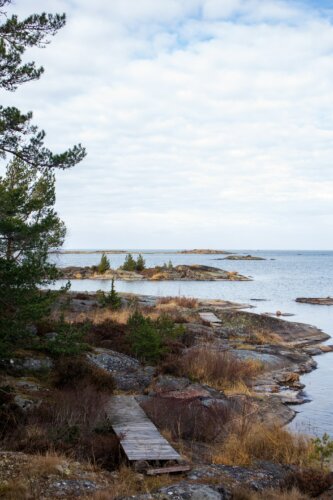
Sweden is one of the most water-rich countries in the world – countless lakes adorn the country’s green landscape. The largest of these are Lake Vänern and Lake Vättern, both of which are located in the southern part of the country.
Lake Vänern is almost fourteen times the size of Lough Neagh, making it the largest lake in the EU and the third largest lake in Europe. It is surrounded by picturesque coastal towns, cosy sandy beaches and other wild nature.
Vättern is in no way inferior. Along its shores you will not only find idyllic Swedish nature and beautiful beaches, but also historic towns with a variety of cultural sites and museums – one highlight is the island of Visningsö, the largest in Vättern, which was Sweden’s first royal residence.
Göta Canal
The Göta Canal makes its way from Vänern in the west to the Baltic Sea coast through Sweden, covering a distance of 190 kilometres. There are tours on the water – short canoe trips or longer river cruises – or along the water in a motorhome. The numerous locks are also popular destinations and photo opportunities, especially Bergs Slussar, the seven-stage lock staircase near the town of Linköping on Lake Roxen.
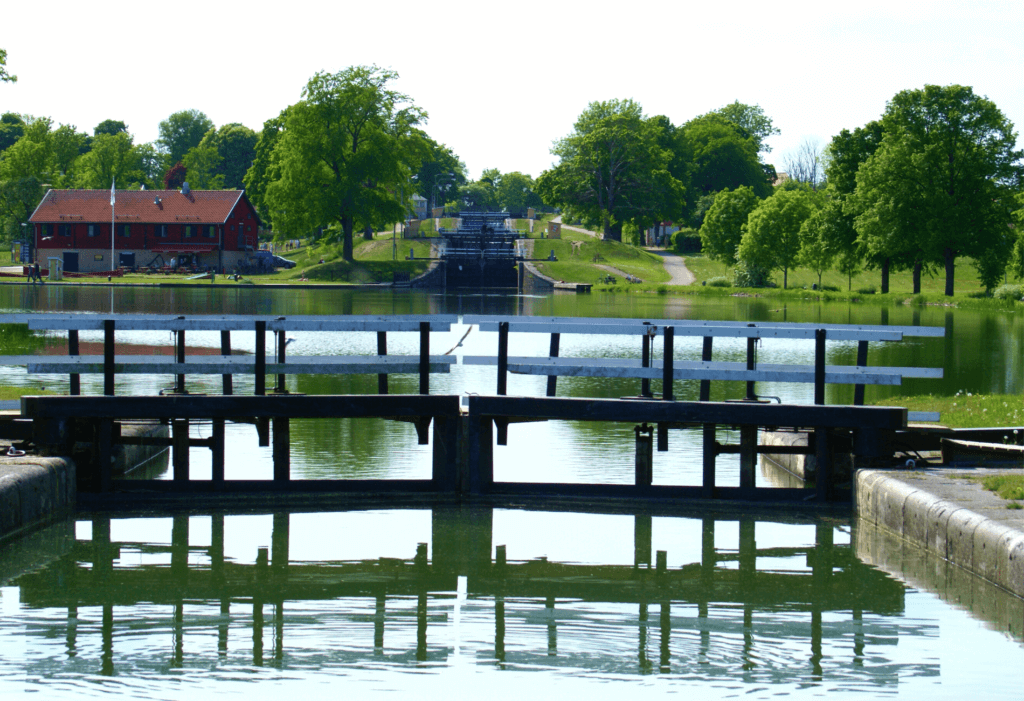
Hiking in Sweden: Värmland’s forests and Kungsleden
Sweden is full of dense forests and all kinds of other beautiful natural landscapes that invite you to go on long hikes. There are many hiking trails, but you can also roam freely through nature – the right of public access also allows camping in Sweden in the great outdoors, for example.
The dense forests in Värmland in central Sweden, also known as the “land of the forest”, are particularly recommended. However, caution is advised – there are numerous moose and bears in the partly undeveloped areas.
One of the most famous hiking trails in Sweden is the Kungsleden (“King’s Trail”) in northern Sweden. It leads through 440 kilometres of Nordic wilderness and mountains, including Kebnekaise, the highest mountain in Sweden. The long-distance hiking trail is divided into two parts, a northern section from Abisko to Hemavan and a southern section from Storlien to Sälen.
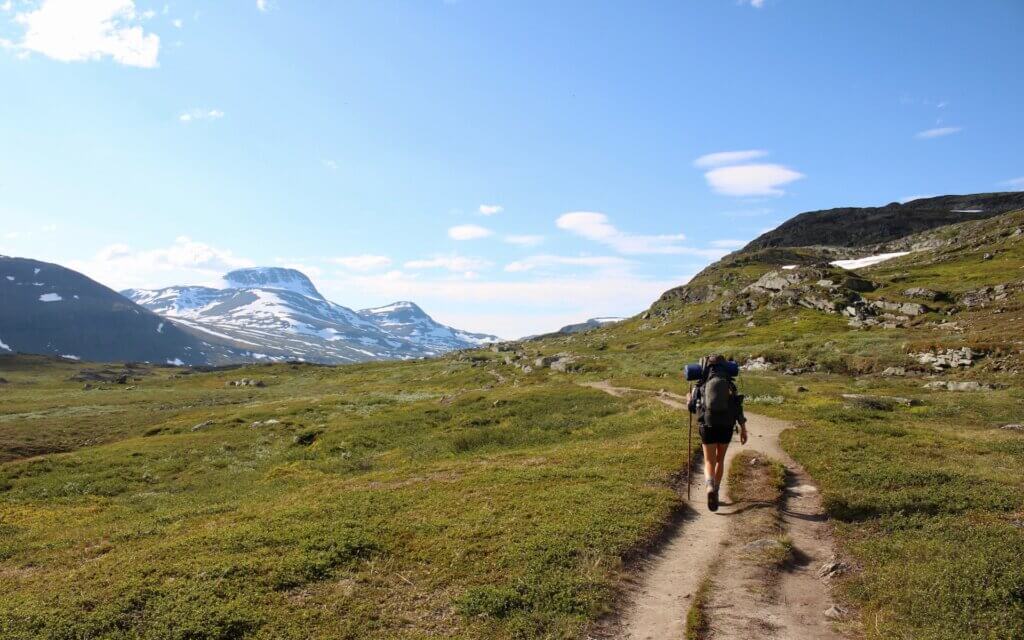
Sights on Sweden’s west coast
Sweden’s west coast is full of thriving coastal towns, long beaches and dreamy forests. Life is characterised by its proximity to the sea and to Norway.
What to visit in Gothenburg
Gothenburg is Sweden’s second largest city and a modern centre on the Swedish west coast. The harbour metropolis combines maritime and natural flair with a flourishing art, culture and gastronomy scene.
Gothenburg harbour
Gothenburg’s maritime history is most evident in Sweden’s largest harbour. The red and white tower there is also known as the “lipstick” and offers a good view over the city. When the weather is nice, you can simply stroll along the quayside and watch the ships and boats, but it is also worth visiting the historic ships moored in the harbour and the “Maritiman” adventure museum. There are around 15 museum ships to visit here.
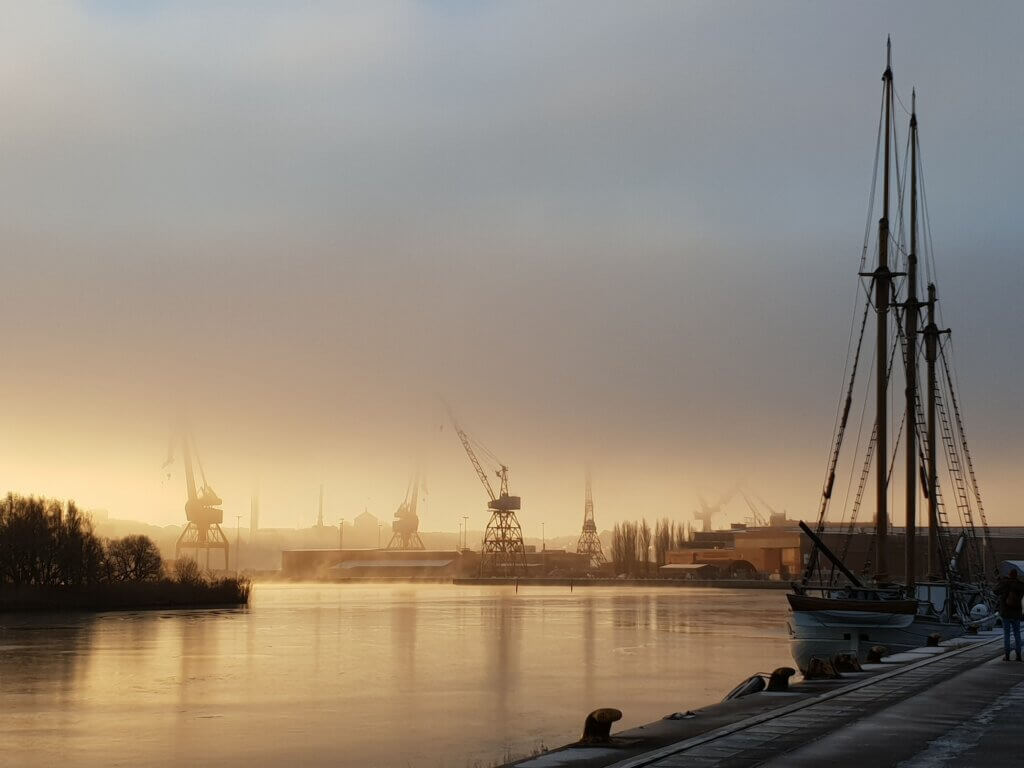
Gothenburg archipelago
The Gothenburg archipelago (skärgård), which comprises many small rocky archipelago islands, lies off the coast of the city. Especially in summer, it is worth strolling through the cosy villages with their small falu red houses or visiting a local restaurant. If you want, you can even spend the night here. Incidentally, a day ticket is ideal for a day of island hopping. The ferries are part of Gothenburg’s public transport system.
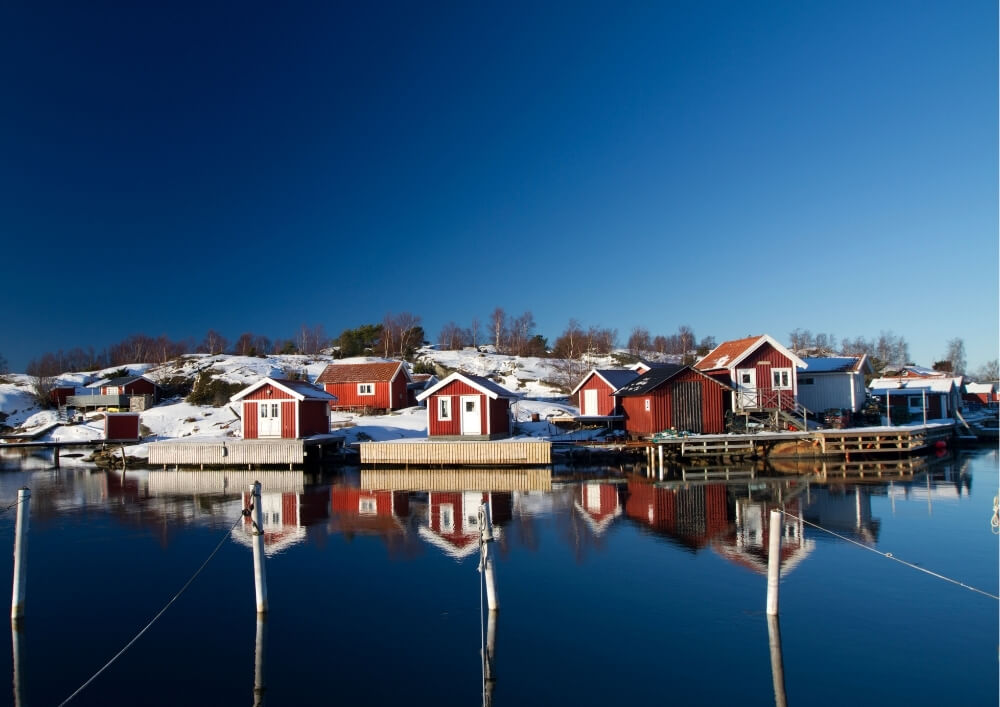
Liseberg
Liseberg is the largest amusement park in Northern Europe, which is located in the centre of the city and was opened in 1923. Here you will not only find various rollercoasters, wild water rides and drop towers, but also attractions for the little ones. In summer, the “Live Liseberg” concert series takes place, with international stars performing. In winter, on the other hand, the park is transformed into a wonderful Christmas market with an open-air ice rink.
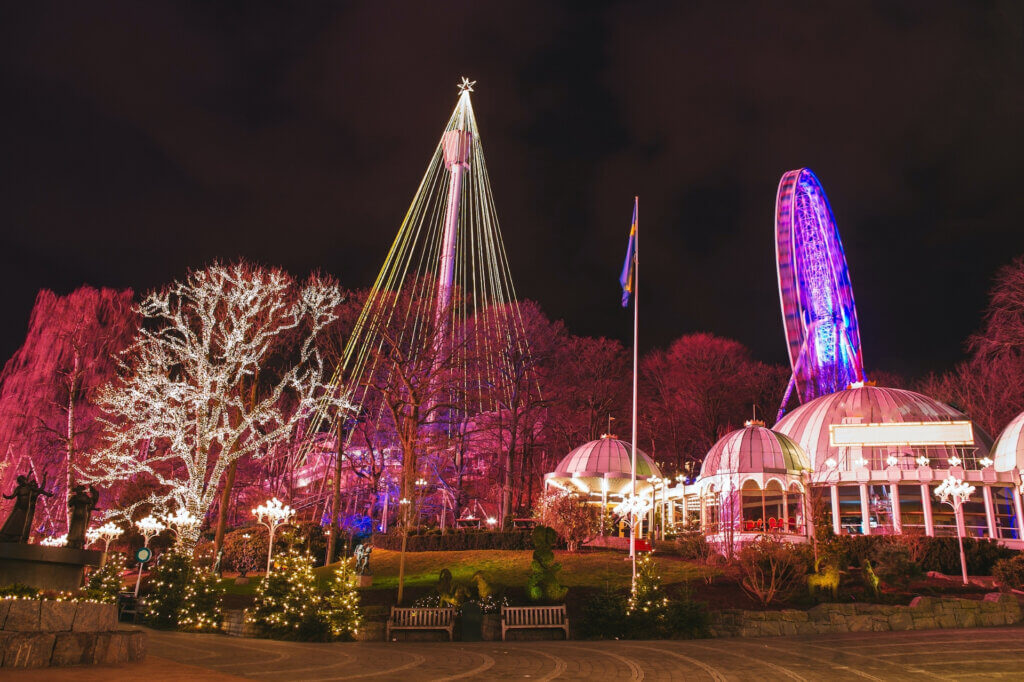
The Halland region
The historic province of Halland, also known as the “Swedish Riviera”, is located on the Swedish west coast and stretches from Helsingborg to Gothenburg. Its nickname is entirely justified, as Halland guarantees the best seaside holidays: Kilometres of sandy beaches offer fantastic conditions for swimming or surfing.
But Halland and the west coast are also very popular with cyclists, since the Kattegattleden, Sweden’s first national cycle path, runs along the Halland coast. The coastal towns are also worth a visit, including Laholm, Halmstad, Falkenberg, Kungsbacka and Varberg. In addition to beautiful beaches and cosy cafés, you will also find interesting cultural attractions such as Tjolöholm Castle, the cold bathhouse in Varberg and interesting museums.
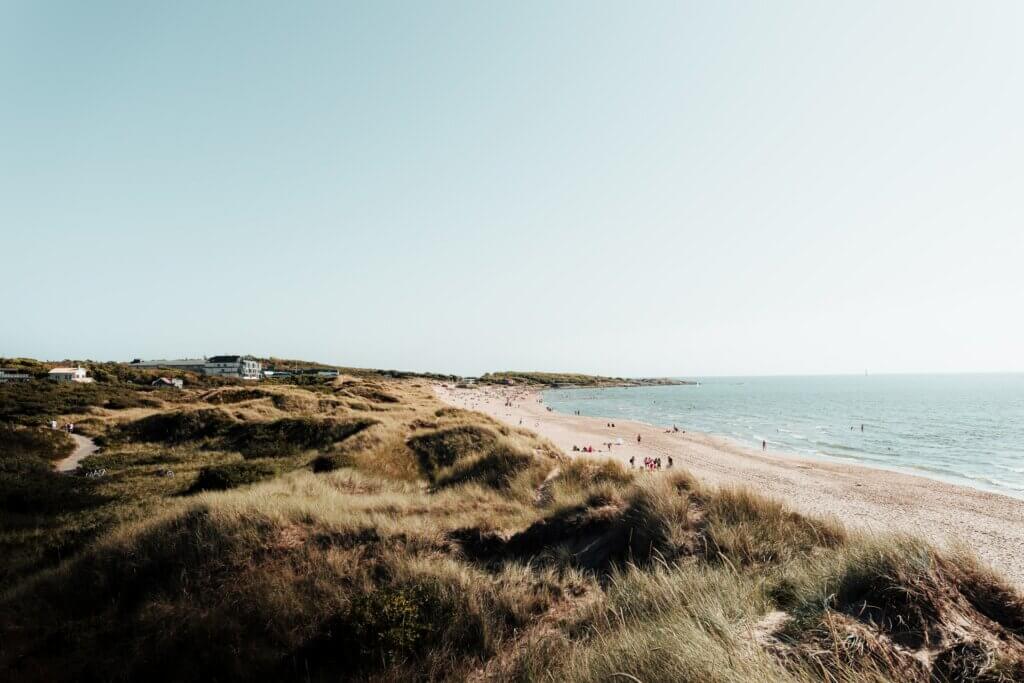
Sightseeing in the south of Sweden
Southern Sweden, with its densely populated regions, is a centre of Swedish culture. There are also numerous forests and lakes, as well as coastal areas and towns steeped in history.
Malmö
Sweden’s third largest city is located in the very south of the country, just a few minutes’ drive from Copenhagen in Denmark via the Öresund Bridge. Malmö is a centre of culture, and the harbour city’s music scene is particularly well known. The city’s landmark is the Turning Torso, which at 190 metres has been the tallest building in Scandinavia since 2015 and dominates the Malmö skyline. Malmö attracts visitors with its beautiful beaches, historic city centre and Malmöhus fortress.
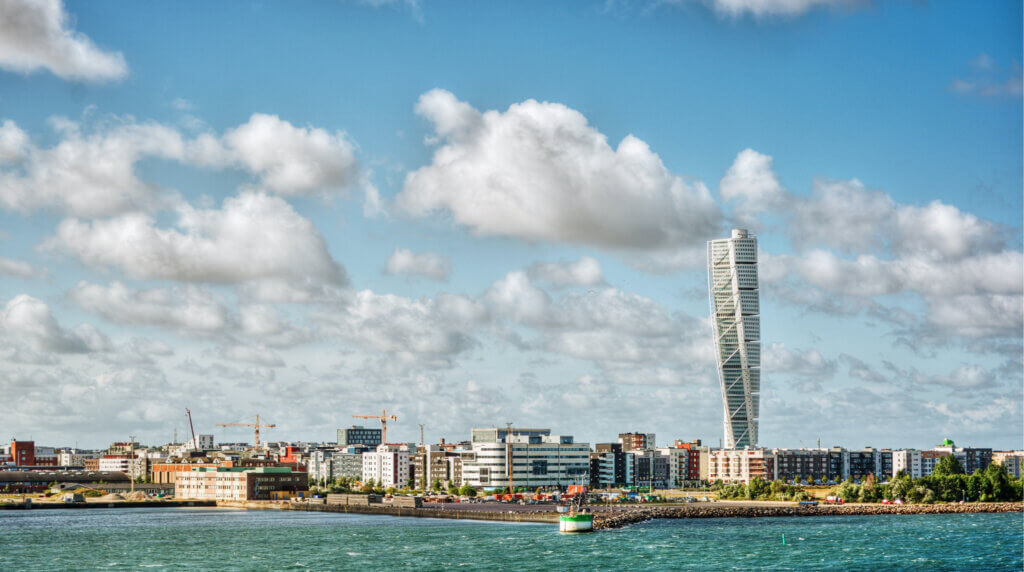
Kalmar
Tranquillity between history, art and culture: Småland’s third largest city Kalmar is located directly by the sea and offers urban flair without being hectic. It is known above all for its history – Kalmar Castle, one of the best-preserved Renaissance castles in Northern Europe, is where the Kalmar Union was founded in 1397, making it an important place in Sweden’s history. In addition to the castle, the historic city centre and the cathedral are also popular excursion destinations, as is Kalmar Sund beach.
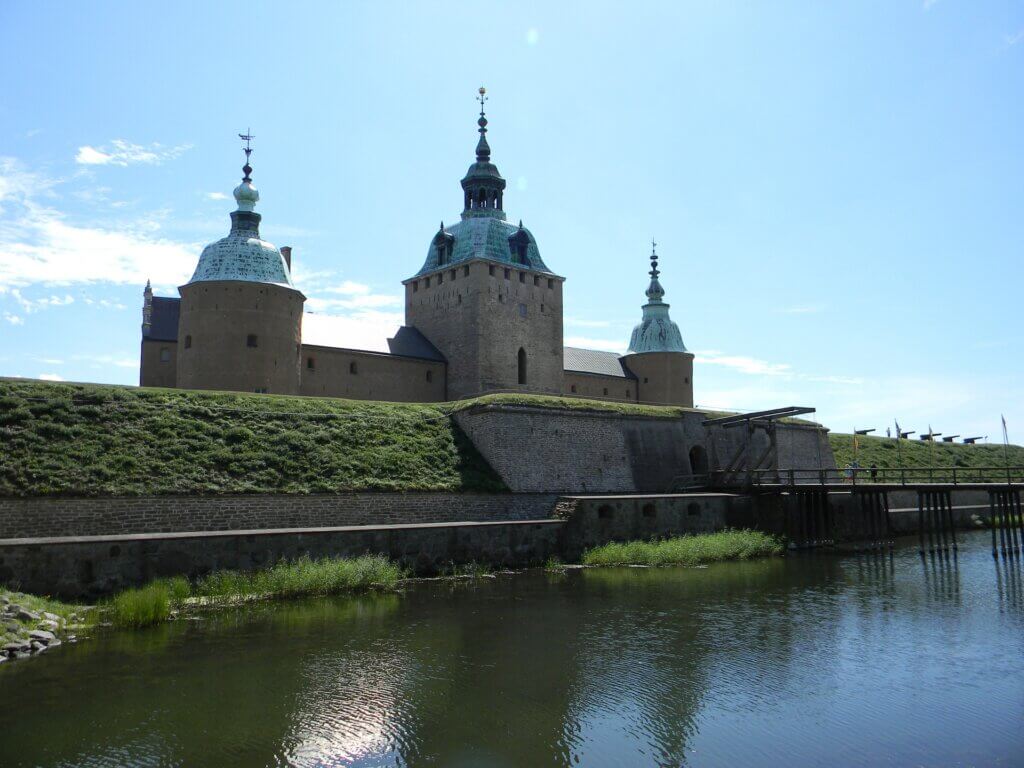
Astrid Lindgrens Värld
In southern Sweden lies the province of Småland – home to Astrid Lindgren, the most famous Swedish author of all time, and most of her characters. In her home town of Vimmerby, you can immerse yourself in the material – not only is the birthplace of the creator of Pippi and Emil located here, which is now a museum, but also Astrid Lindgren World, one of Sweden’s most popular and best-known theme parks.
Opened in 1981, the park is divided into different areas, each dedicated to one of the iconic stories: On open-air stages, there are theatre performances re-enacting well-known scenes from the books, and actors in costume walk around posing for a photo with visitors.
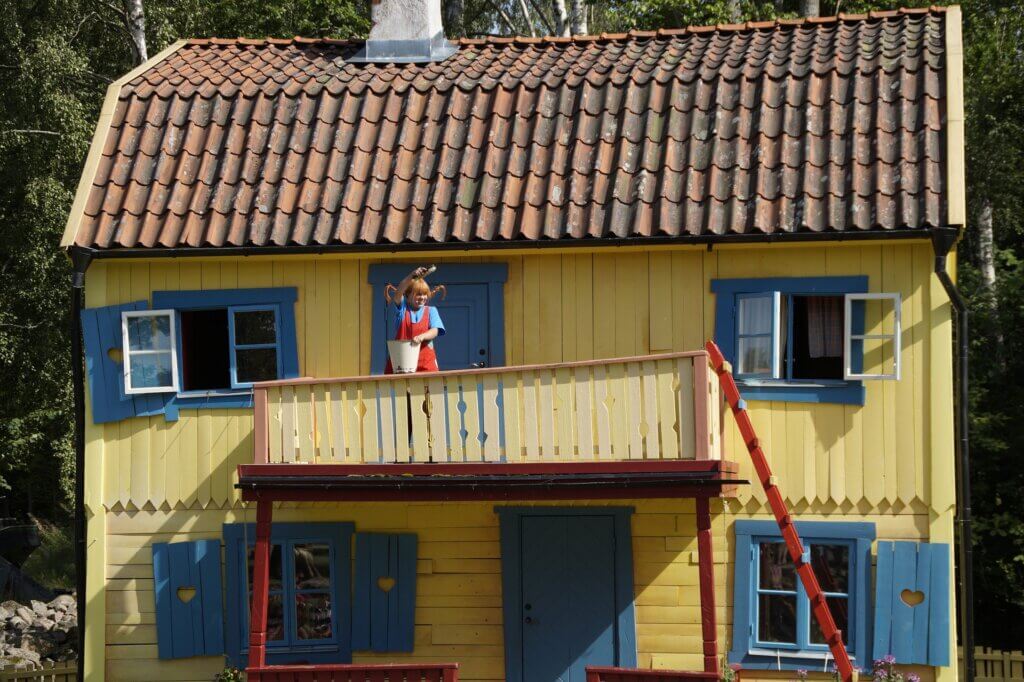
Sweden’s big islands: sightseeing on Gotland and Öland
Sweden’s two large islands are located in the south of the country: Gotland and Öland. The Baltic Sea islands create a completely different picture of Sweden. Both offer extraordinary and beautiful nature experiences with dense forests, vast heathlands and small, cosy towns such as Visby on Gotland or Borgholm on Öland. There are also historical sites on both islands – especially on Gotland.
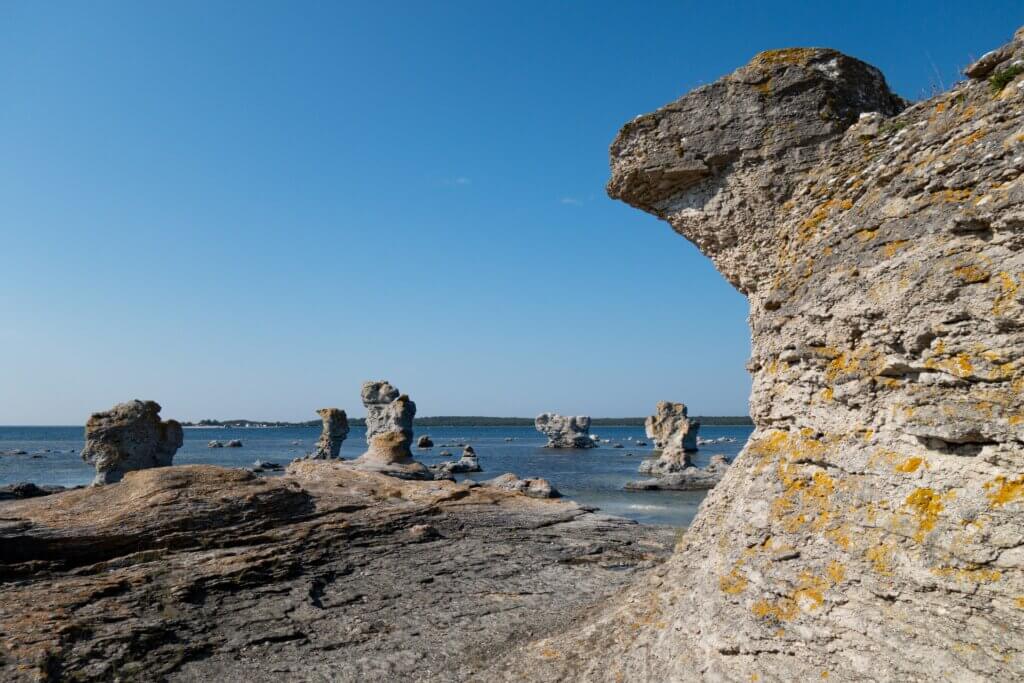
Viking sights in Sweden
The Vikings were also at home in Sweden, even if they were not as well-known and present as in Norway, Denmark or Iceland. Accordingly, there are also some interesting sites, exhibitions and museums in Sweden that emphasise the warriors of the past.
Birka
In Lake Mälaren to the west of Stockholm is the island of Björko with the former town of Birka, one of the most important archaeological sites when it comes to Vikings in Sweden. Birka was the most important trading centre in Northern Europe for 200 years and also played a major role in politics and religion. Today, the island is home to a reconstructed Viking village, a Viking museum and a rune stone.
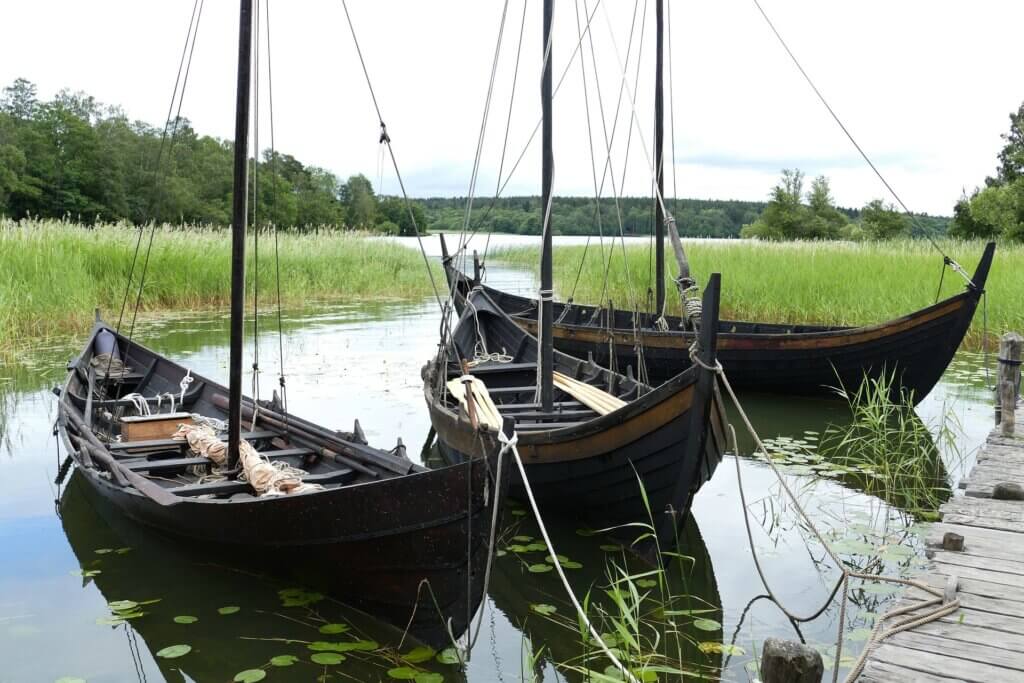
Viking Museum Vikingaliv
One of the newest museums on the island of Djurgården in Stockholm is the Viking Museum Vikingaliv. It tells the story of the Vikings in Sweden. The main focus is an interactive exhibition called Ragnfrid’s Saga, in which the life of a fictional Viking family is presented on an eleven-minute “journey”.
Trelleborg: Viking castle and Viking village Foteviken
On the south coast of Sweden lies the ring castle of Trelleborg, which is not only the town’s landmark but also its namesake. In the 1980s, archaeologists found traces of it and concluded that King Sven Forkbeard had Trelleborg built around the year 981. Today, around a quarter of the castle complex made of wood and earth has been reconstructed and is freely accessible.
Around 15 kilometres from Trelleborg is the museum village of Foteviken, an open-air museum that simulates everyday life in a Viking village from 1134. It consists of 20 reconstructed buildings including a watchtower and palisades. Showmen in authentic costumes offer an insight into the life of the Vikings in workshops, gardens and the like.
